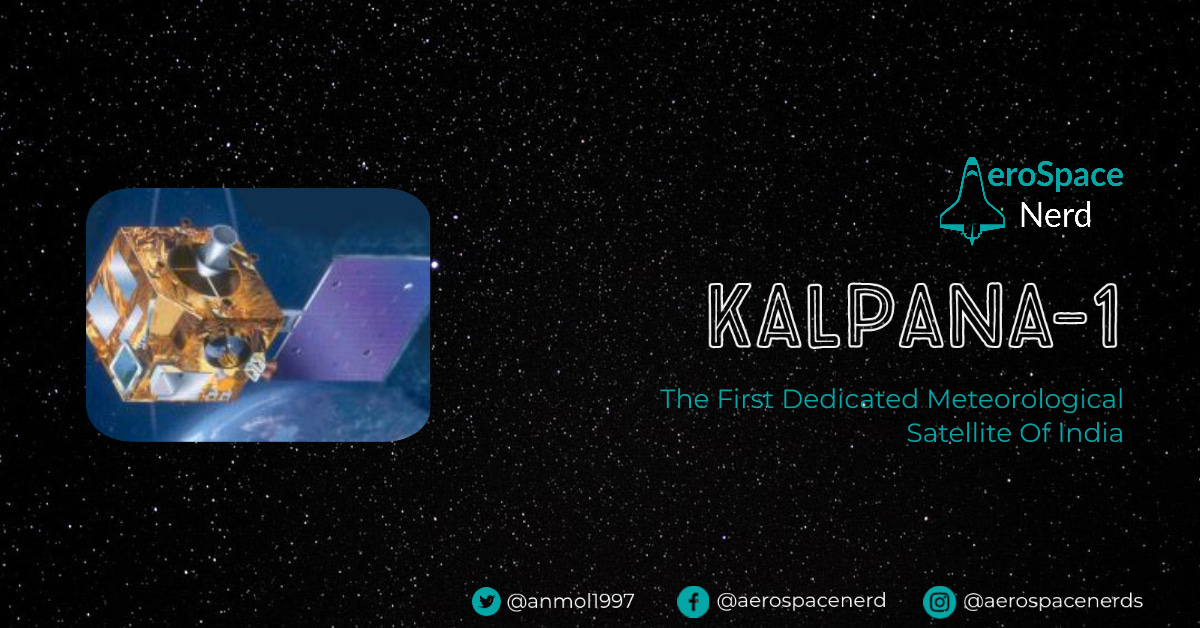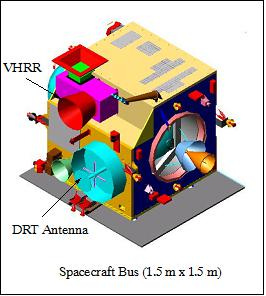Kalpana-1: The First Dedicated Meteorological Satellite Of India
Kalpana-1 / MetSat-1 was the first dedicated meteorological (weather) satellite. Learn about this ISRO spacecraft which functioned for 15 years.
Satellites are used for multiple purposes. India's INSAT series of satellites combine three of the satellite Applications namely Telecommunication, Television and Meteorological. Generally, INSAT satellites combine functions to cater to multiple applications, MetSat-1 was the first dedicated GEO weather satellite. MetSat-1, later renamed Kalpana-1, was launched in 2003 and functioned for more than 18 years. Let us delve into the story of the Kalpana-1 satellite project.
First Dedicated Meteorological Satellite
Indian Space Programme focused to cater to civil applications such as telecommunication, television, weather and remote sensing since its inception. This vision resulted in the INSAT series of satellites. The series began as telecommunication satellites but expanded to television, meteorological and remote sensing applications. Generally, the mission served multiple applications in a single spacecraft. MetSat-1 became the first dedicated weather satellite.
At the dawn of the 21st Century, two operating meteorological payloads in orbit stopped operating. The VHRR/2 payload onboard the INSAT-2E satellite failed just after launch in 1999. Now, only the INSAT-2B satellite launched in 1993 remained. But it was limited in the station-keeping fuel. On Nov. 4, 2000, ISRO retired the satellite after it completed its mission life in July. It was, therefore, essential to launch another weather satellite soon.
Developing a multi-purpose satellite would take a lot of resources. Therefore, ISRO planned and designed the MetSat-1 satellite as a cost-effective alternative solution. This mission would serve exclusively in GEO for meteorological payloads and services. While it was definitely important to have a cost-effective and quick solution, the satellite did provide other advantages. The performance of the meteorological payload gets constrained in the environment of high power transponders.
Objectives
Major MetSat-1 / Kalpana-1 mission objectives are:-
To establish a small satellite I-1000 bus system that can meet the exclusive service requirements of a meteorological payload for earth imageries
Collection of weather data from low-cost unattended data collection platforms to configure Metsat spacecraft within the lift-off mass constraints of the upgraded existing polar satellite launch vehicle for deployment in geo-synchronous transfer orbit (GTO) mission.
Kalpana-1 / MetSat-1 Spacecraft
Bus: I-1000
The UR Rao Satellite Center (URSC) designed the new I-1000 bus employing lightweight structural elements like CFRP (Carbon Fibre Reinforced Plastic). A central structural thrust cylinder provides mounting interfaces with structural brackets.
Propulsion Subsystem
Fuel: Bi-propellant - mono-methyl hydrazine (MMH) and mixed oxides of nitrogen (MON3).
Thrusters: One 440 N LAM for orbit raising manoeuvres and eight 22 N thrusters for orbit and attitude control
Control Subsystem
Type: Three-axis stabilized (momentum biased control subsystem)
Sensors: Gyroscopes, Earth sensors, digital sun sensor, coarse analog sun sensors, and solar panel sun sensor
Actuators: Magnetic torquers and active thrusters
Thermal Subsystem
Passive: Multi-layer insulation blankets, optical solar reflectors, heat sinks, paints, thermal grease, thermal shields
Active: 112 heaters spread over the satellite maintain the temperature of individual subsystems
EPS (Electrical Power Subsystem)
Power: 550 W
Solar Panel: Single panel solar array of 2.15 m x 1.85 m using GaAs solar cells
Battery: Single NiCd battery (18 Ah capacity) provides power for eclipse phases
Communication Subsystem
Downlink Frequency: C-band (4503.05 MHz)
Downlink Data Rates: Up to 526.5 kbit/s
Uplink Frequency: 402.75 MHz
EIRP: 18 dBW
Antenna: Planar array antenna
Other Properties
Launch Mass: 1055 kg
Propellant Mass: 560 kg of propellant
Design Life: 7 years with an operational goal of 10 years
Payloads
VHRR Instrument
The VHRR observes in VIS, water vapour and TIR bands providing a spatial resolution of 2 km in VIS band and 8 km for the rest. SAC (Satellite Application Center), Ahmedabad developed the instrument.
DRT (Data Relay Transponder)
The DRT (Data Relay Transponder) is part of a DCS (Data Collection System) of ISRO. The objective is to collect data from unattended meteorological platforms in the ground segment.
Launch and Status
Launch: PSLV-C4 launched the MetSat-1 spacecraft on 12th September 2002 from the Satish Dhawan Space Center, SHAR.
Status: The MetSat-1 / Kalpana-1 satellite operated for more than 15 years as compared to its seven years of mission life. Until 2018, it kept providing essential data needed for weather predictions and other meteorological applications.
Renaming to Kalpana-1
After the Columbia Space Shuttle (STS-107) Disaster, Prime Minister Mr Atal Bihari Vajpayee announced that India's meteorological series of satellites, MetSat, will be named as KALPANA. The announcement was made during the condolence meeting to honour Astronaut Kalpana Chawla, born in Karnal (1961), India in the Columbia disaster.





